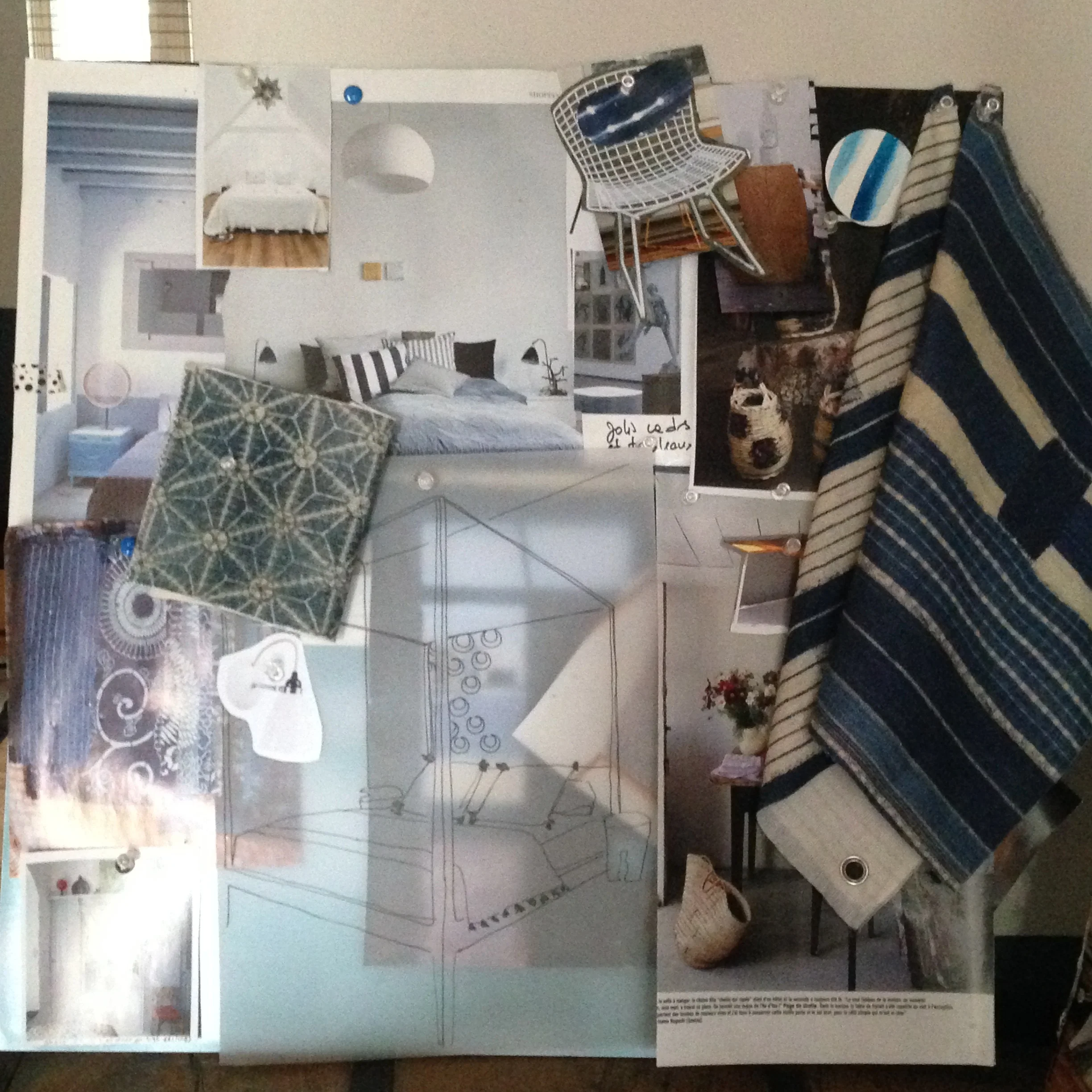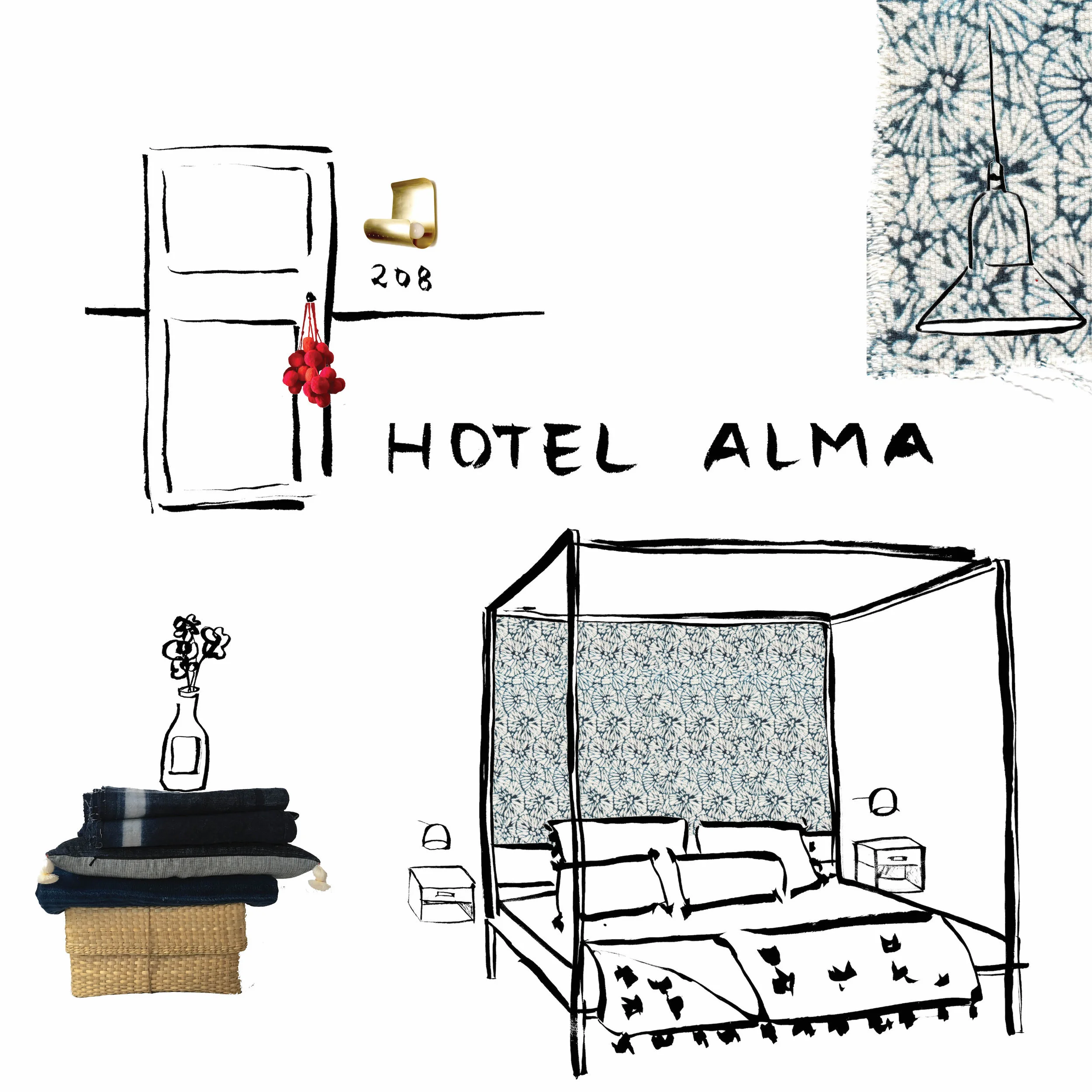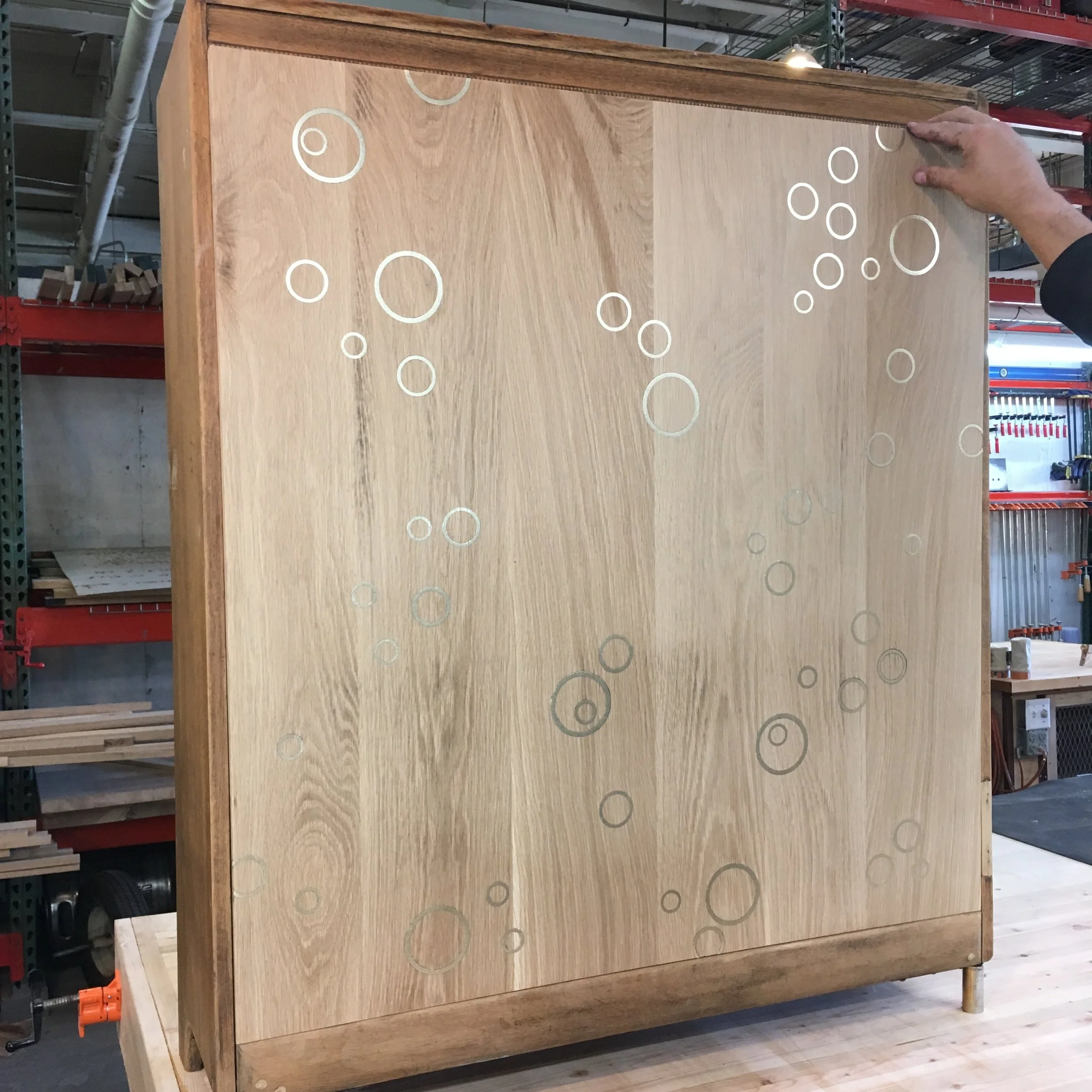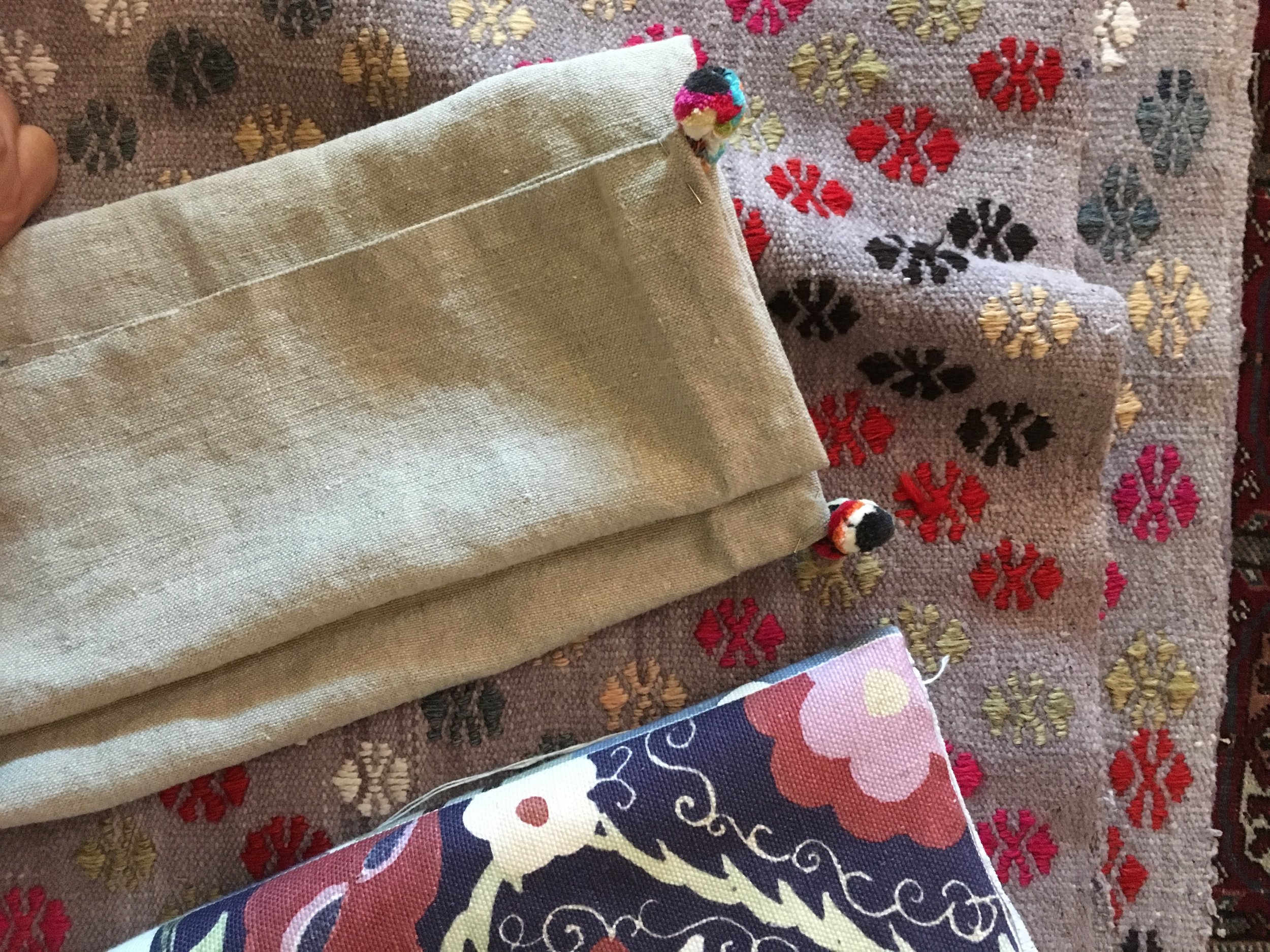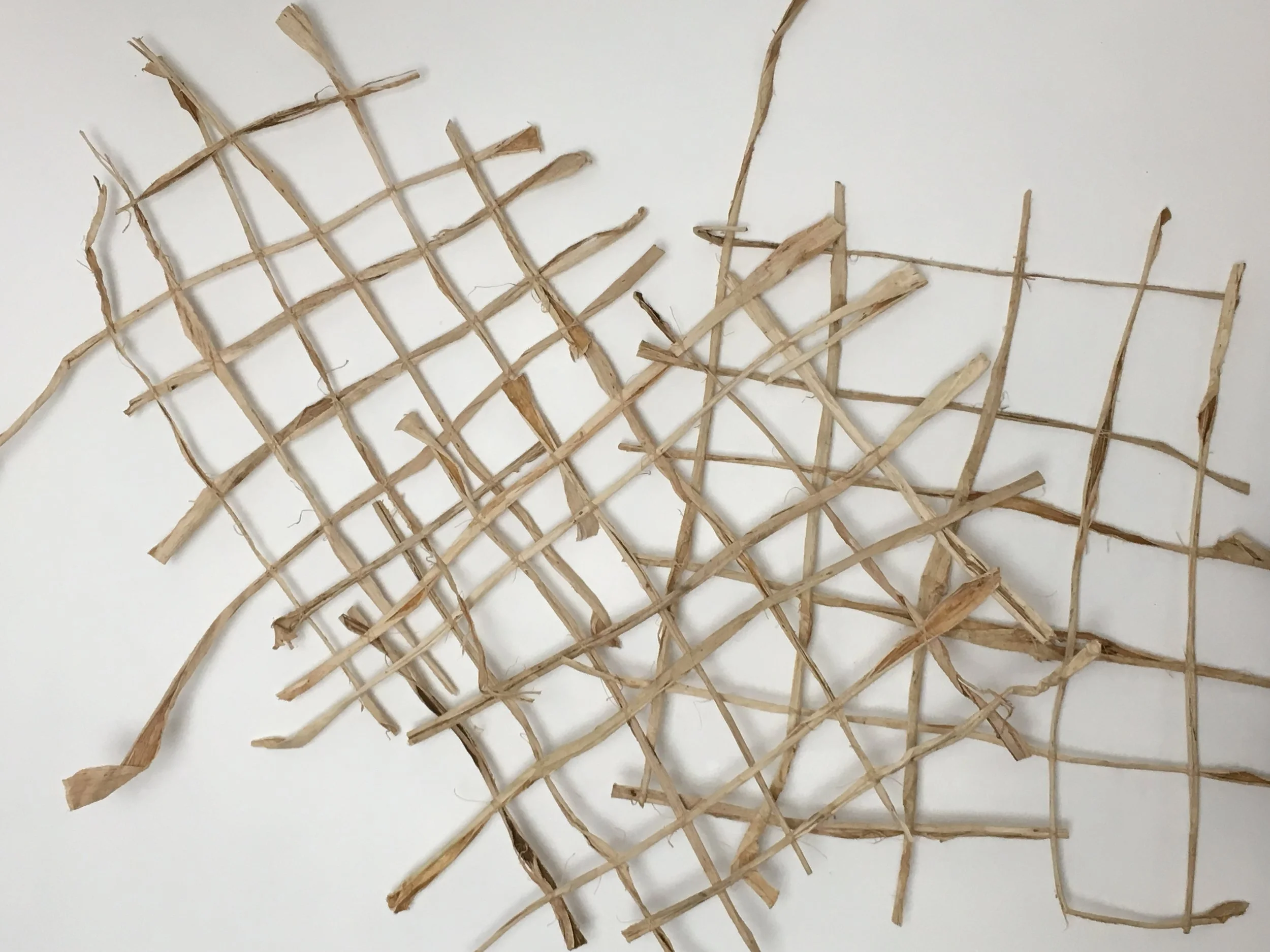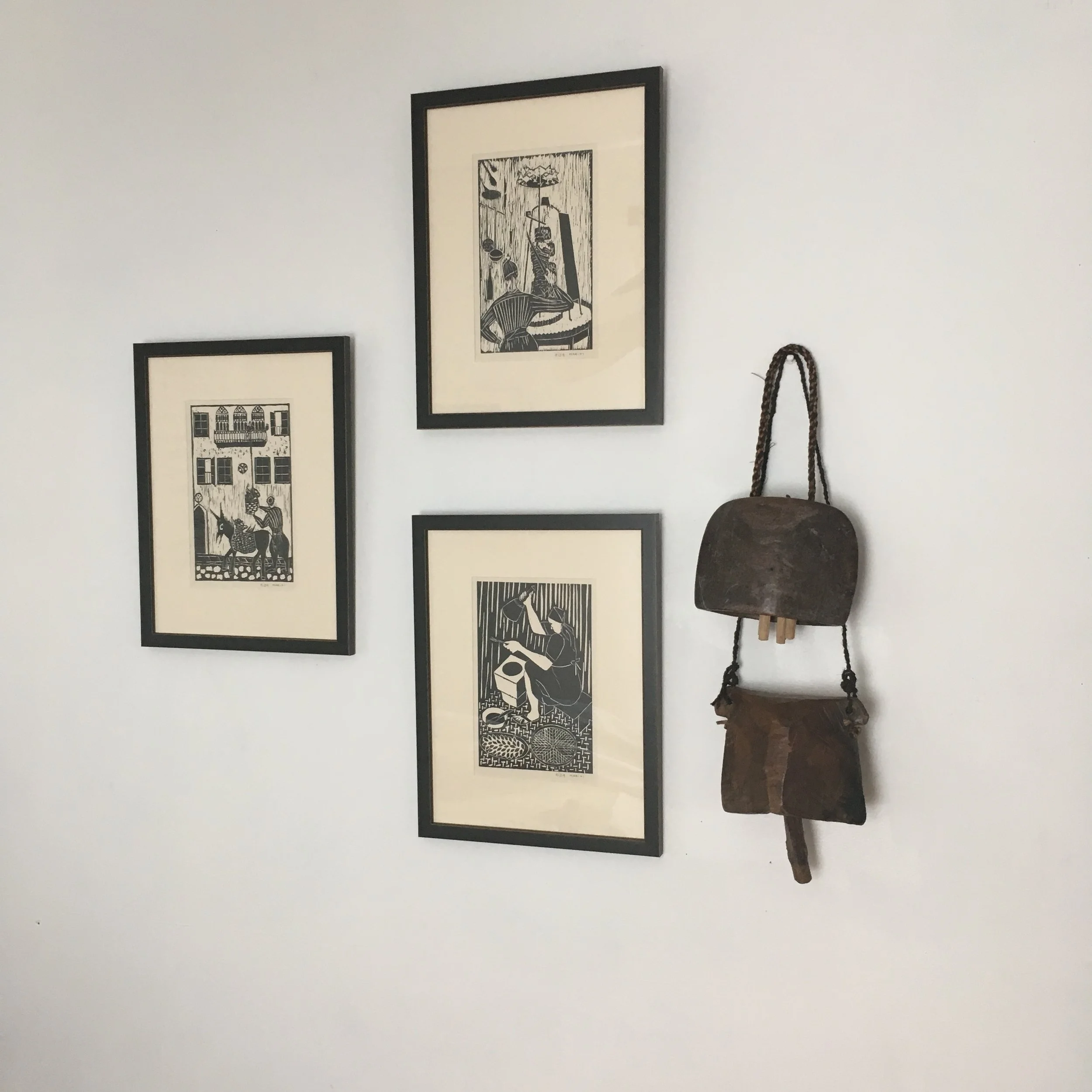Alma Hotel Notes
INSPIRATION
I spent a lot of time in the space (under construction) imagining the life, the movements, the interactions and the wondering eyes of the hotel guests. I visualized those rooms as a safe place, where you can dream, relax, regenerate and go face the world...a shelter… a comforting place emotionally and physically.
It started with Alma's simple, fresh, honest and delicious cuisine that is open to the world. I wanted the rooms to reflect all that as well as the narrative of the sweet old Alma building. You eat a meal surrounded by people in the Cafe or Restaurant Alma, with its open central kitchen - then you go upstairs, close your door and your eyes… just like in a home. Creating a warm and human environment was my main concern all along the project.
FURNITURE
The locally sourced white oak canopy beds I designed were made by Marvin Freitas. They have a light structure that magnifies the 14 feet high ceilings. The beds' round brass inlay details have a suggested beauty inspired by the Japanese esthetic-spiritual concept of wabi sabi.
My goal was to give a physical connection to people: things they want to touch, curves they want to circle with their fingers, objects that make a sound spread around the room and the bathroom.
The white oak desks are inspired by a simple mid-century design, with a minimum of imprint on the floor. All the closets are open, made with the same white oak to give a lightness to the space.
Besides the new pieces, I foraged and gathered several old furniture pieces - a Chinese farm table, a 19th century US Congress desk (with new redesigned legs), a wooden window from the Swat Valley transformed into a console, a vintage French armoire, a bookcase transformed into the Alma lobby piece.
The chance finds of the abandoned treasures in antique shops or flea markets are always inspiring, bringing new directions to the work. Why did I find the two mid century chairs that could have been bought by somebody else an hour later? Now they are living a second or third life at Alma.
TEXTILES
The project was also an opportunity to express my long passion of textiles. Some vintage (Asian, Central Asian, Latin American and African) and some new textiles warm up the environment as well as unique vintage Turkish rugs in each room. Instead of the usual window treatment, I preferred the tactility of wooden shutters stopped by river stones to give a feeling of nature and home.
ART
I have a particular love for the ephemeral, materials like wood, ceramic, paper, straw, all so easily destructible.
A lot of the pieces on the walls followed that reasoning: Japanese snow shoes made of straw, hand painted tree barks, wall sculptures made of kozo fiber (traditionally used for Japanese paper making), Chinese fiber calligraphy brushes, ceramic fish, and painted ceramic beads (set in the form of Turkish prayer necklaces called “tesbih” that I grew up seeing in the hands of many men in Istanbul).
Wood block prints have a similar fragility. We found several Lebanese and Japanese woodblock prints which all have a discrete beauty and lightness in their presence that fit the feeling I wanted to give to the rooms.
OPENING INVITATION by Thea Spring
La Vie Mode d’Emploi by Georges Perec
Ways of Curating by Hans Ulrich Obrist
The Poetics of Space by Gaston Bachelard
Esthétiques du Quotidien au Japon by Jean Michel Buissou
Tsutsumo- An Introduction of the Exhibition of the Art of the Japanese Package by Hideyuki Oka
Journal d'un Parfumeur by Jean Claude Ellena
In Praise of Shadows by Jun'ichiro Tanizaki
Penser / Classer by Georges Perec
The Shape of Design by Frank Chimero
A Frame for Life by Ilse Crawford
Design on Art by Bruno Munan

